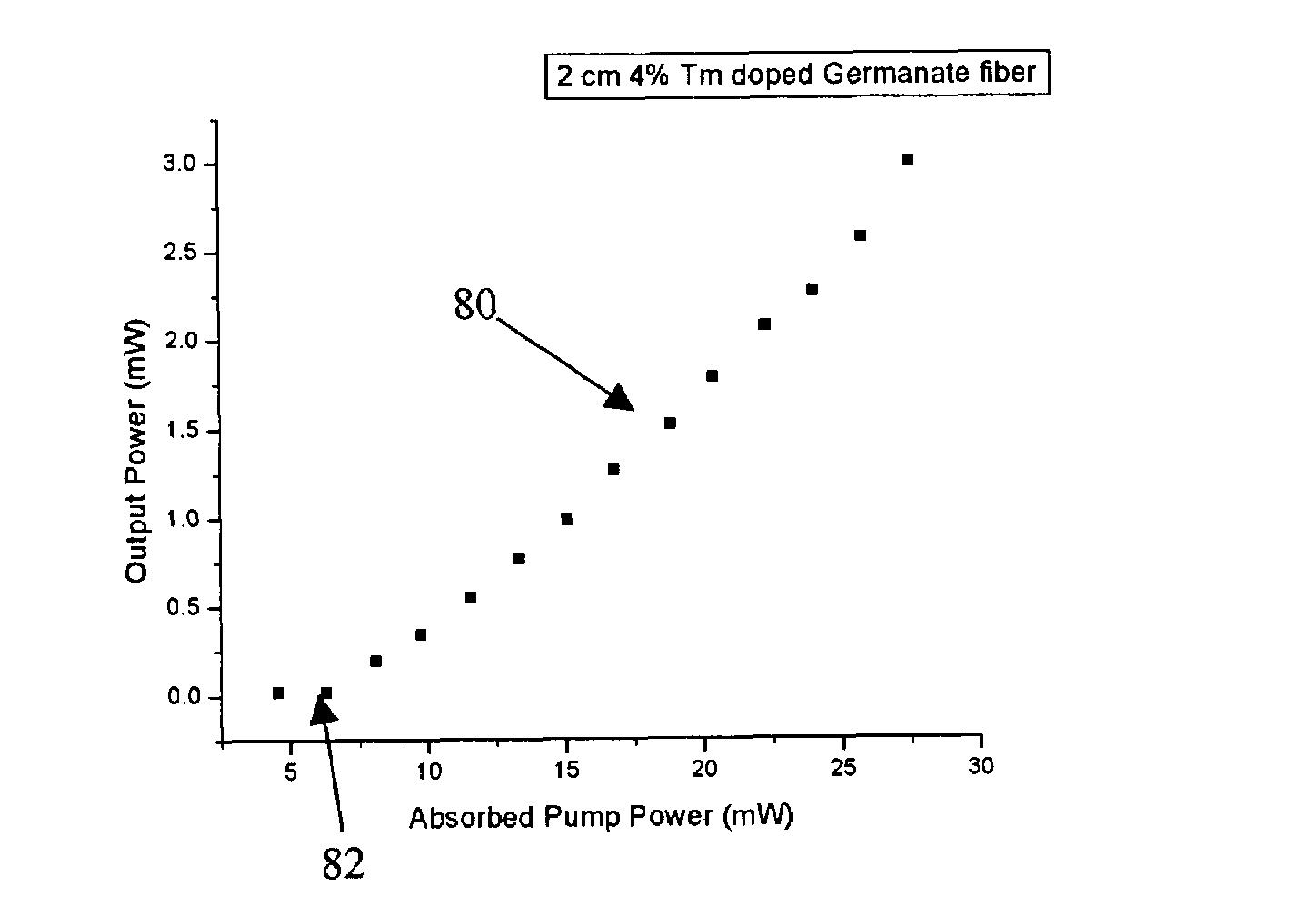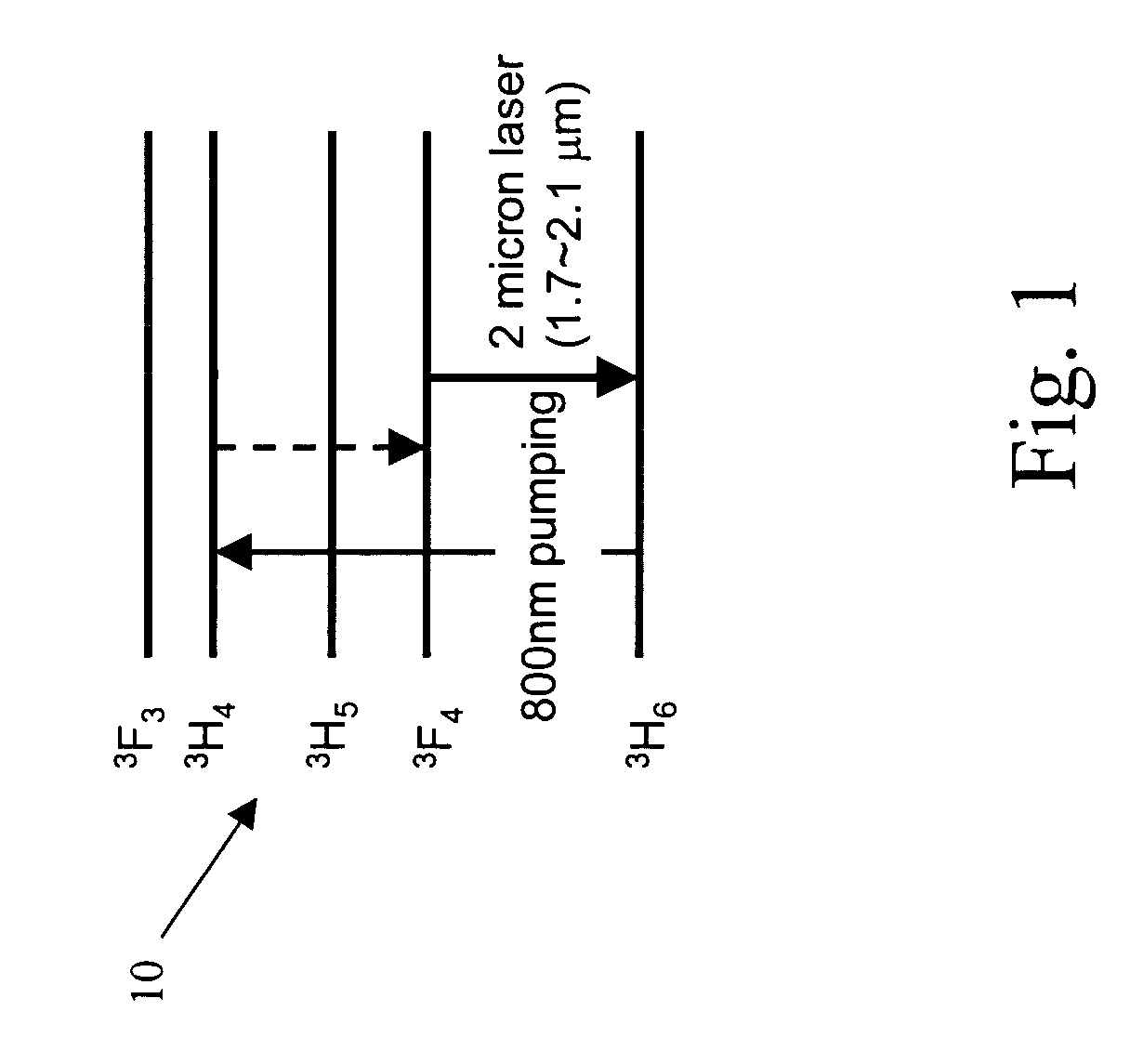Thulium-doped heavy metal oxide glasses for 2UM lasers
a heavy metal oxide and laser technology, applied in the field of glasses and fibers, can solve the problems of no glass is a good host, crystalline materials are expensive, and cannot be pulled into fibers, and achieve the effect of enhancing laser emission and quantum efficiency
- Summary
- Abstract
- Description
- Claims
- Application Information
AI Technical Summary
Benefits of technology
Problems solved by technology
Method used
Image
Examples
second embodiment
[0028]In a second embodiment, tellurite glass host 16 comprises tellurite oxide (TeO2) from 30% to 90% by weight, and preferably 40% to 80% by weight.
third embodiment
[0029]In a third embodiment, bismuth glass host 18 comprises bismuth oxide (Bi2O3) from 20% to 90% by weight, and preferably 30% to 70% by weight.
[0030]In each embodiment, the glass host further comprises a glass network modifier (MO) 22 selected from K2O, Na2O, Li2O, BaO, CaO, MgO, ZnO, Y2O3, PbO, or combinations thereof from 1% to 60% by weight, and preferably 5% to 40%, and a glass network intermediator (XO) 24 selected from Al2O3, B2O3, La2O3 or combinations thereof from 0% to 50%, by weight, and preferably 5% to 30%.
[0031]FIGS. 3 and 4 are tables of Thulium doped germanate glasses 26 and tellurite glasses 28, respectively. In these samples, the Thulium ions are introduced with Thulium oxide (Tm2O3).
[0032]The fluorescence properties of Thulium ions in the Thulium doped germanate glasses 26 are shown in FIG. 5. Two broad emission bands 30 at 1.49 μm and 32 at 1.8 μm in the fluorescence spectra 34 are due to 3H4→3F4 transition and 3F4→3H6 transition, respectively. To illustrate th...
PUM
| Property | Measurement | Unit |
|---|---|---|
| quantum efficiency | aaaaa | aaaaa |
| reflectivity | aaaaa | aaaaa |
| reflectivity | aaaaa | aaaaa |
Abstract
Description
Claims
Application Information
 Login to View More
Login to View More - R&D
- Intellectual Property
- Life Sciences
- Materials
- Tech Scout
- Unparalleled Data Quality
- Higher Quality Content
- 60% Fewer Hallucinations
Browse by: Latest US Patents, China's latest patents, Technical Efficacy Thesaurus, Application Domain, Technology Topic, Popular Technical Reports.
© 2025 PatSnap. All rights reserved.Legal|Privacy policy|Modern Slavery Act Transparency Statement|Sitemap|About US| Contact US: help@patsnap.com



